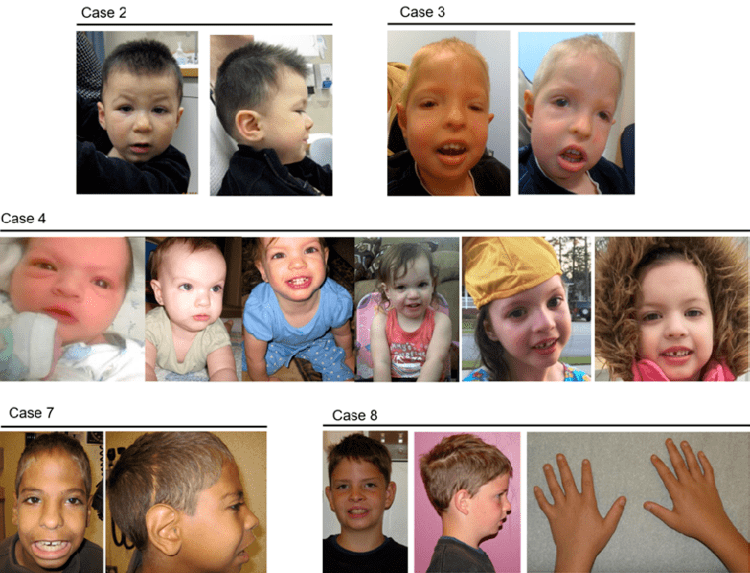 Similar Anaphase lag, Aneuploidy, Beckwith–Wiedemann syndrome | ||
2p15-16.1 microdeletion is a rare genetic disorder caused by a small deletion in the short arm of human chromosome 2. First described in two patients in 2007, by 2013 only 21 (missing reference for the other ~17 patients) people have been reported as having the disorder in the medical literature.
Contents
Clinical characteristics
Only 21 patients with 2p15-16.1 microdeletion have been described as of 2013. The clinical similarities between the individuals resulted in the classification of a new genetic syndrome. The shared clinical features include moderate to severe intellectual disability and similar facial features including telecanthus, drooping eyelids, downslanting, short palpebral fissures, a prominent nasal bridge, high palate with long, smooth philtrum and an everted lower lip. Some of the patients also had feeding problems in infancy, microcephaly, optic nerve hypoplasia and hydronephrosis, wide-spaced nipples, short stature, cortical dysplasia, camptodactyly and pigeon toe.
Description of deletion
Three of the patients reported had a consistent proximal breakpoint on chromosome 2, but varying distal breakpoints. The patients have 2p15–16.1 deletions of 5.7 megabases (Mb), 4.5 Mb, 3.9 Mb, 3.35Mb 3.3Mb and 570 kilobases, respectively. In all 21 patients the deletions are de novo — neither parent possessed nor transmitted the mutation to the affected individual. One patient is a genetic mosaic, having some cells with the deletion and others without.
Affected genes
The largest deletion encompasses approximately 15 protein-coding genes, 6 pseudogenes and a number of other as yet uncharacterised candidates, including:
